Drier than the Dust Bowl: Iowa, facing more drought, preps for water shortages
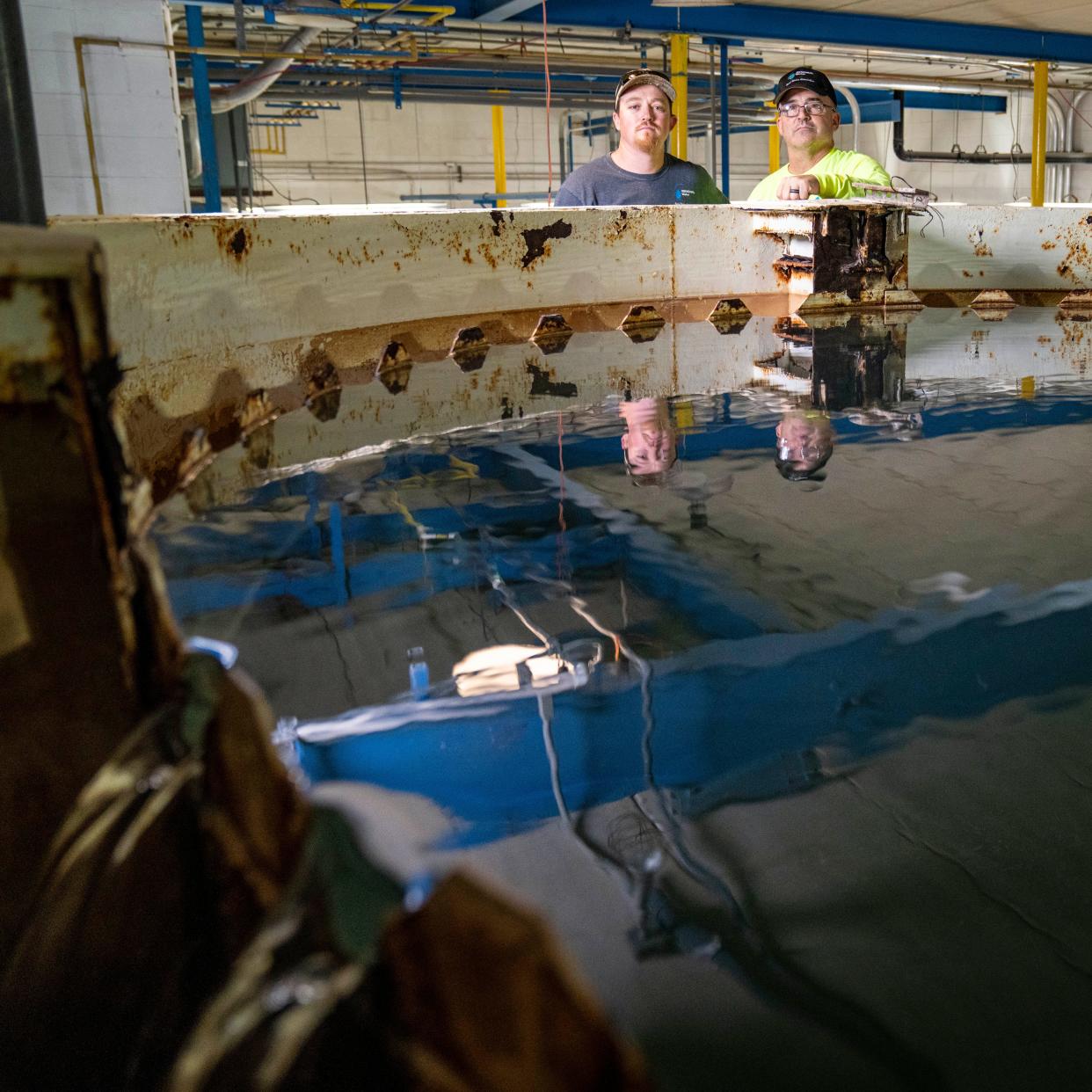
AVOCA — The nearly 50-year-old Regional Water Rural Water Association treatment plant ran nonstop a record 72 days this summer, struggling to keep up with drought-driven demand.
With the Avoca-based utility’s wells drying up, the district was pulling reserves from its nine water towers, which signaled to the plant it needed to continue producing. Typically, the utility shuts down the plant every couple of days for maintenance.
With the overwhelming demand, there was a risk the plant could break down
“It was getting pretty scary,” said Josh Grenfell, the Regional Water Rural Water Association’s production superintendent.
In an alert that’s still in effect, the utility asked residents in its five-county service area northeast of Council Bluffs to eliminate all nonessential water use, and asked businesses and livestock producers to cut back as much as possible. Some dairies and cattle and hog producers closer to Council Bluffs hauled water from there, said Tom Kallman, Regional Water’s general manager. Council Bluffs says its bulk water sales spiked 76% in June compared to a year earlier.
In Iowa, historically water rich, cracks in water availability are beginning to show as the state enters its fourth year of drought, the longest stretch in two decades. With dwindling rivers, lakes and aquifers, some water utilities are taking emergency action to keep water flowing from customers’ taps:
Landing a $1 million federal grant, Regional Water recently finished building a riffle dam on a branch of the Nishnabotna River, slowly raising the water level to recharge the shallow aquifers that feed the district’s wells. The utility, producing only about 70% of the water it usually does, also plans to buy water from Council Bluffs after running an 18-mile line from the Missouri River city to Minden on the south side of the utility’s system. Tapping more water from Council Bluffs will cost $11.2 million.
With drought shrinking West Lake, Osceola’s water supply, the southern Iowa town is weighing a $16.5 million plan to use treated wastewater to boost its level. With state approval, the city could become Iowa’s first to recycle its wastewater. Osceola Water Works also is raising its lowest intake to add 100 days of water supply, hoping that step, along with additional rainfall, will carry it through next year.
East-central Iowa’s Belle Plaine received a $250,000 state grant to help restore a wetland to recharge shallow wells that are operating at 30% to 40% of capacity. With the help of Fareway supermarkets, Iowa Homeland Security is providing jugs and bottles of water to residents. While the city's tap water is safe to drink, it’s discolored because there hasn't been enough water available to flush its distribution system, city administrator Stephen Beck said.
While Iowa is already struggling with drought, carbon capture pipeline developers could significantly boost water demand. They're seeking millions of gallons for cooling as part of the process to liquefy carbon dioxide emissions from the state’s ethanol plants, so carbon dioxide can be pumped to neighboring states for underground sequestration. And the state's growing number of data centers, serving firms like Meta, Google and Microsoft, also are gobbling water to cool their equipment.
Iowa’s increasing water use concerns Keith Schilling, the state’s geologist and director of the Iowa Geological Survey. He compares Iowa’s aquifer reserves to a checking account. Iowa annually assesses how much water is being used from its aquifers, he said, but “all we’re doing is looking at how many checks we write."
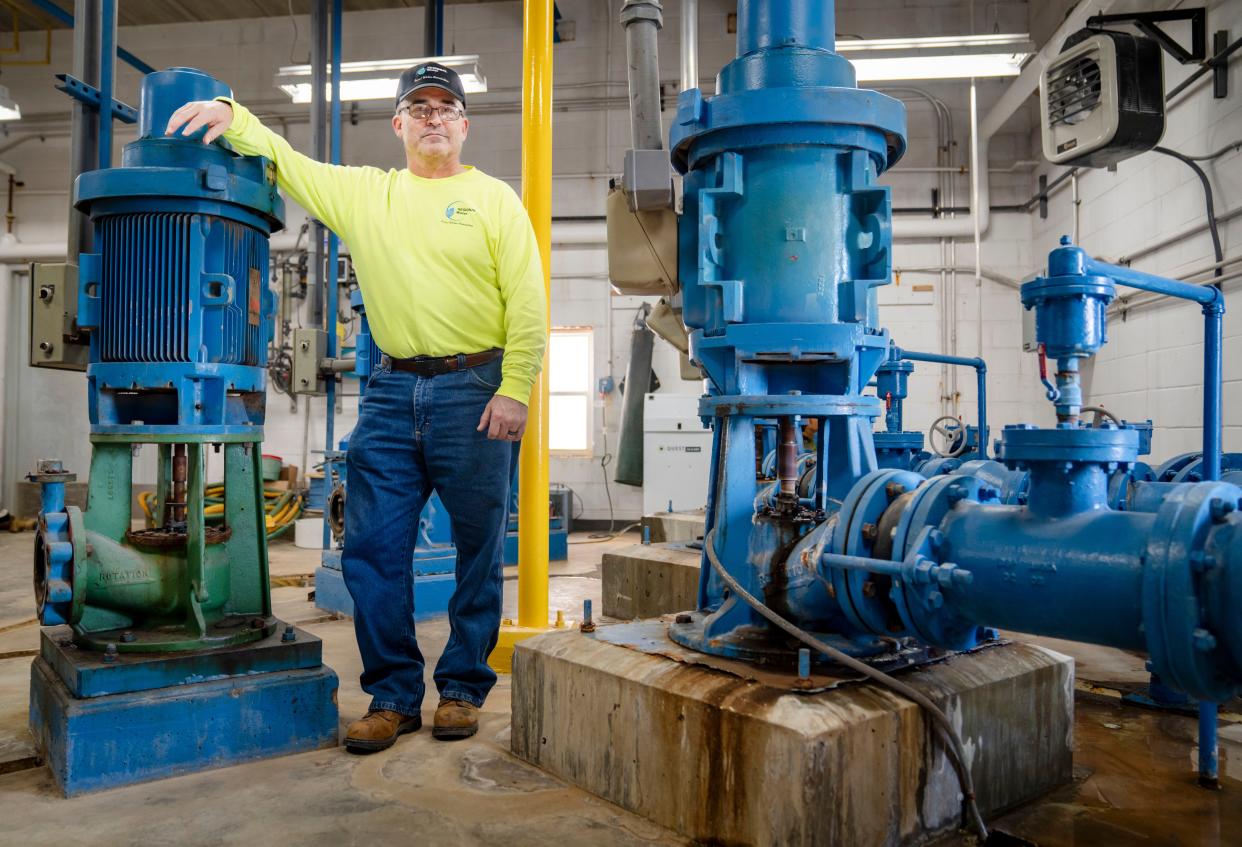
“We don’t know how much is in the checking account” or how much rainfall is going into the bank, recharging the state's aquifers, Schilling said.
The state needs a comprehensive assessment of Iowa’s water resources to determine how much use is sustainable, Schilling said.
“We don’t have unlimited water,” he said. “It’s not infinite.”
As drought drags on, state prepares for emergency water supplies
Already typically among Iowa's driest months, November brought an average of one-hundredth of an inch of rain across the state. “We’ve had zero rain,” said Tim Hall, an Iowa Department of Natural Resources hydrologist.
Two eastern Iowa counties, Tama and Benton, had the lowest recorded amount of rain in June, July and August in 120 years, Hall said ― drier than any three years during the 1930s Dust Bowl.
The eastern third of Iowa is in extreme drought, according to the U.S. Drought Monitor, with another third of the state gripped in severe drought. A section of eastern Iowa dipped for a period this fall into exceptional drought ― the most severe category.
Iowa was about 9.5 inches below normal rainfall through September and about16 inches below normal for the three-year duration of the drought, a state report shows.
More: Des Moines Water Works intends to join proposed new Central Iowa Water Works
Iowa officials are preparing for conditions to worsen: They're looking at making portable water treatment plants available, streamlining permitting so towns can drill additional wells and deciding how best to get water tankers to dry cities and towns, should the need arise.
“I don't think anybody anticipates widespread water shortages next year,” Hall said. “But if we don't get some decent rain this winter, there could be a handful of facilities … that are challenged.
“We're just trying to be prepared for that,” he said. The Iowa DNR, Homeland Security, the Department of Agriculture and other agencies are holding meetings on the state’s response to continued drought. The effort is similar to getting supplies like sand bags, barricades, pumps and other equipment ready in case of flooding, Hall said.
The prospect of deploying the 5,000-plus-gallon water tankers brings back memories of Des Moines in 1993, when flooding shut down the water works, leaving about 300,000 residents without water for 12 days. It was another eight days beyond that before the water was safe to drink.
“We’re all hoping that doesn’t happen, but we’re planning for the potential,” Hall said.
But with a warming climate, Iowa and other Midwestern states are expected to continue to see rapid swings between extreme wet and dry conditions, changes that will impact farming, water quantity and quality, health and well-being and infrastructure, according to the Fifth National Climate Assessment, released in November.
More: Gripped in 3-year drought, south Iowa city weighs using wastewater to bolster water supply
Hog farmer scrambles for new well after water supply scare
Hall said he hasn’t heard concerns from the agriculture community about getting water to the state’s tens of millions of pigs, chickens, turkeys and cattle. If Iowa farmers’ wells run dry, they can look at drilling another well or hook into rural water systems, he said.
But if a rural water utility would shut down, the challenges would be significant: It would be difficult to haul enough water for thousands of pigs, chickens or turkeys in large confinements or move animals to locations with water, Hall said. “There likely would be mortality,” he said.
More: Drought-weakened corn stalks a worry as Iowa harvest continues
The top concern would be protecting human health by ensuring hospitals and residents have adequate water, Hall said. "Down toward the bottom of that list is going to be things like industry and agriculture," he said.
Warned this summer that Regional Water was struggling, Rick Chipman, who raises hogs near Avoca, scrambled to line up tankers he could use to bring water to two of eight hog facilities that use the utility as their primary water source. Regional Water also serves as backup for facilities with their own wells.
“It would have been a nightmare,” Chipman said of the prospect of losing that supply.
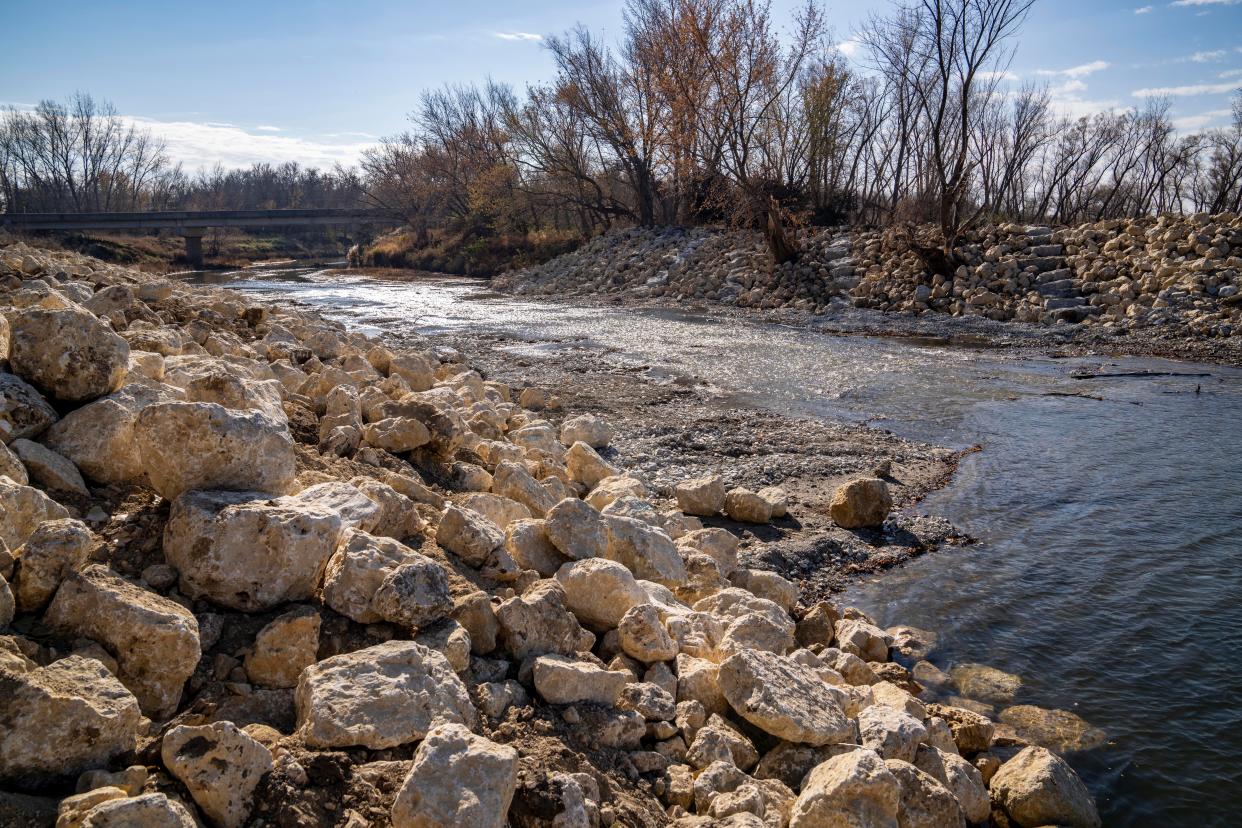
Finding there was a four-month waiting list for a company to dig a new well, Chipman brought a low-quality well back in production.
“There’s no question we were concerned,” said Chipman, who’s still waiting to get a new well drilled. Were his operations to lose Regional Water as a primary and backup source, "Where do you get water? How do you get water?” he wonders, adding that moving animals to water sources is nearly impossible.
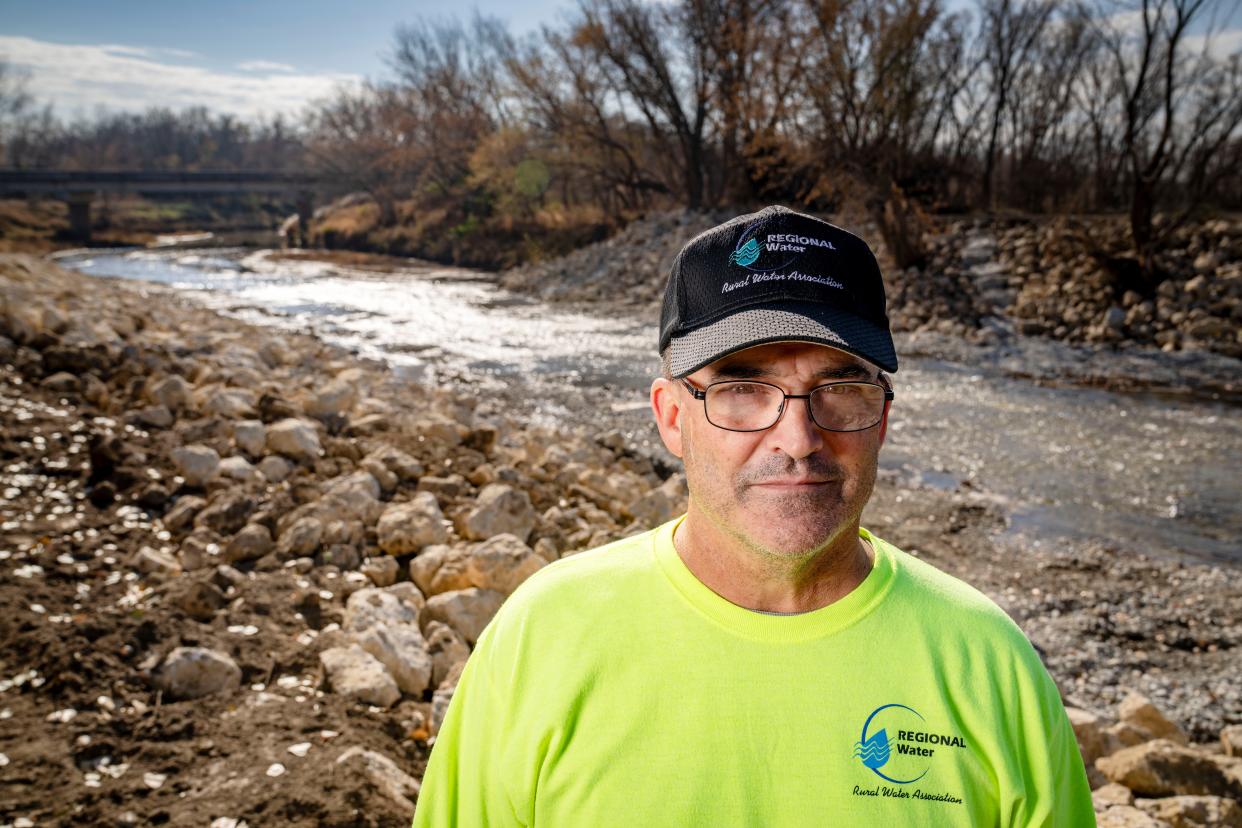
Cedar Rapids suburb looks for alternatives as well levels steadily drop
Rainfall isn't the only water source surrounded by uncertainty in Iowa. The state also is using the water from the Jordan aquifer, which covers most of Iowa, faster than it’s being recharged, experts say. The same is true for the Dakota aquifer in western Iowa.
Most of Iowa’s 26 million corn and soybean acres are dependent on rainfall. Only about 222,000 acres are irrigated, the 2017 U.S. Census of Agriculture shows. But Schilling, the Iowa geologist, said the continued drought “makes it a near certainty” that more farmers will look to irrigate crops.
An Iowa DNR report shows that irrigation of corn and soybeans, along with specialty crops, climbed 41% last year over 2021.
Schilling estimates that the Jordan — also called the Cambrian-Ordovician — has declined nearly 200 feet since the mid-1970s. Depending on the location, the Dakota’s levels have fallen 12 feet to 30 feet.
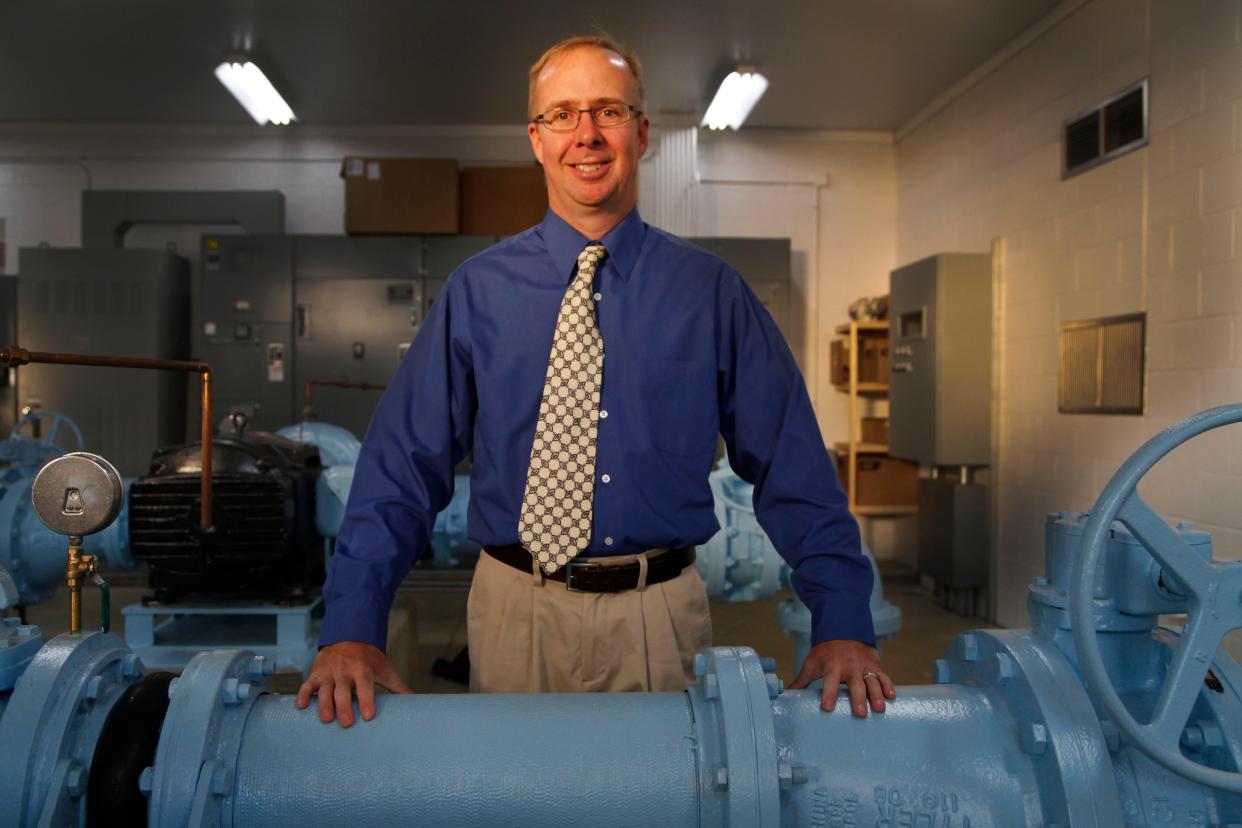
“The Jordan aquifer water is very old. It takes a long time for water to recharge,” said Todd Steigerwaldt, water department manager for Marion, a fast-growing suburb of Cedar Rapids.
With the city's four Jordan aquifer wells, Steigerwaldt sees the declines firsthand. From 2008 to 2022, one Marion well lost “on average 3.6 feet of static water a year,” he said. Another well declined 5.9 feet annually over the same period.
“We continue to lower and lower our pumps and put in bigger motors” to pull water from the aquifer, a measure that's becoming more expensive every year, Steigerwaldt said. “It’s not getting recharged. It’s gone.”
While the Jordan's reserves are more plentiful, Marion last year drilled a new well in the Silurian, a shallower aquifer that is more easily replenished. And with another housing development proposed, the city plans to drill a second Silurian well to stay ahead of drinking water demand.
Beginning in 2014, the Iowa DNR placed restrictions on using the Jordan aquifer in Marion's county, Linn, as well as Johnson and Webster counties, to protect the groundwater from being overused. But Marion, where the population has climbed 20% since 2010, has bumped into those restrictions.
The city’s permitted use has declined from 2 billion gallons each year to 1.4 billion. That's prompted Marion to use one Jordan well only as a backup.
“Will the Jordan go dry at some point? No,” Steigerwaldt said. “There’s a lot down there … But we need to be mindful, and hold use in check.”
New concern: Carbon capture pipelines could add to growing water demand
The city of Marion is just one of the many users whose demand on Iowa's water is growing. The state as a whole used about 843 billion gallons of water last year, a 1.4% increase from 2021, the DNR reported.
At nearly 60% of total consumption, power companies are the largest water user in Iowa, followed by utilities providing drinking water, at nearly 19%, and industrial and commercial users, at 11%. Quarries, ethanol, irrigation and recreation are among the other major uses.
About 3.3% of the water — or 27.4 billion gallons — came from the Jordan aquifer in 2022.
Despite state restrictions, Jordan water use has grown 17% over the past decade, hitting a record in 2018 and continuing to climb.
Ethanol plants use 7.6 billion gallons a year in producing the renewable fuel, with 2.6 billion coming from the Jordan, the state reports. And biofuel-related water needs would increase significantly under two companies’ carbon capture pipeline proposals.
Summit Carbon Solutions, which is seeking a permit to build a $5.5 billion carbon capture pipeline across Iowa, has received an Iowa DNR permit to draw nearly 56 million gallons of water a year at a northeast Iowa ethanol plant. The agency also is considering its request for 28 million gallons a year at a north-central Iowa plant.
Summit proposes to capture carbon dioxide from 13 Iowa ethanol plants, liquefy it under pressure, then transport it via the pipeline to be sequestered deep underground in North Dakota. It told the Des Moines Register in an email that it needs a "quantity of fresh water" to cool the CO2, which heats up when it’s compressed.
Wolf Carbon Solutions proposes a similar pipeline.
If all 42 Iowa ethanol plants link to carbon capture pipelines, the industry’s water needs could spike nearly 40%, according to Steve Veysey, a retired Iowa State University chemist and pipeline opponent. Veysey used U.S. Department of Energy data to calculate carbon capture pipeline companies' water needs.
A lawsuit filed in Polk County District Court, seeking to rescind the Summit permit, argued that the planned water use does not meet the standard of being beneficial to Iowa residents. Though the lawsuit has since been dismissed, the Iowa DNR cited the litigation in declining to comment on Veysey's estimate.
With increased water demands like those for the proposed carbon capture pipelines, Iowa needs to better assess how much water it has available in its aquifers, Schilling said.
“We’re simply just adding another straw to this big drink,” he said. “It’s another major user like all these data centers that require water for cooling. They use as much water as a medium-sized town.”
With competing demand and declining water levels, Iowa needs to step back and better assess its water resources, he said.
“If you don't have a water budget for these aquifers, you're not going to be able to track and evaluate whether the use is sustainable,” he said.
Donnelle Eller covers agriculture, the environment and energy for the Register. Reach her at deller@registermedia.com or 515-284-8457.
This article originally appeared on Des Moines Register: Parts of Iowa drier than the Dust Bowl; state preps for water shortages
